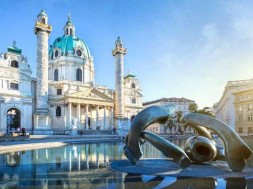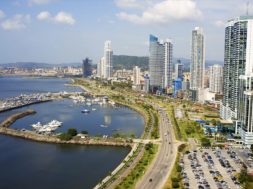Austria has something for both the art-loving traveler and the outdoorsman alike and is ultimate year-round vacation destination. Skiers and hikers can make ample use of the Austrian Alps. While those who have an eye for architecture will go gaga over what is considered some of the most elaborate and ornate designs in all of Europe. A journey to Innsbruck, with it gorgeous back drop of snow-capped mountain peaks which serve to highlight a town of impressive historic structures. For those who know their music history, Austria is also the homeland of great composer Mozart and birth place of an unparalleled musical tradition, particular in the nation’s capital, Vienna.
Best Time To Visit Austria
Austria has something to offer travelers no matter the time of the year, whether it is sightseeing during the summer or enjoying a bit skiing during the winter. The downside to the summer months is obviously the larger crowds and inflated prices for food and accommodations. Those particularly interested in winter sports will want to take advantage of the prime season, which runs from mid-December through late March. In June, the Alps are laden with the riotous colors of spring, attracting visitors who want to do more than hit the slopes.
Facts About Austria
- Full name: Republic of Austria
- Capital City: Vienna
- Area:83,858 sq km/32,378 sq mile
- Population: 8,022,300
- Time Zone: GMT/UTC +1 ()
- Language: German (official) Turkish (other) language spoken by an ethnic minority Slovenian (other) official in Carinthia; Croatian (other) official in Burgenland; English (other); Hungarian (other) official in Burgenland
- Religion:8% Roman Catholic, 6% Protestant
- Currency:Euro (€)
- Electricity:230V 50HzHz
- Electric Plug Details: European plug with two circular metal pins
- Country Dialing Code:43
- Money and Costs:
- Meals
Budget: US$5-10
Mid-range:US$10-20
High: US$20+
- Lodging
Budget: US$10-40
Mid-range: US$40-80
High: US$80+
- Meals
Events in Austria
Music festivals seem to be a common fixture in Austria throughout the year. Beginning in January, the city hosts various New Year’s Eve concerts that include luxurious balls. Those who enjoy masquerades and dances will find plenty of both during February’s Fasching (Carnival) celebrations in honor of spring’s return. Corpus Christi celebrations include even more carnival activities, many of which are held in the Salzkammergut. Between mid-May and mid-June, the annual Vienna International Festival is a highlight of the Austrian calendar of events that includes many worthy arts programs and events. Those who like the festive atmosphere of nice summer nights and warm bonfires will enjoy the June 21 Midsummer night celebrations. Come at the tail end of the summer season is the Salzburg International Festival that includes a host of musical productions and features the works of native son, Wolfgang Mozart. In October, there is National Day, a patriotic celebration and St Nicholas Day, held on December 5th, a holiday festival that ushers in the season with a events and colorful parades.
Attractions in Austria
Vienna – The city of Vienna is the crown jewel of Austrian cities and historically rich center for the once powerful Habsburg dynasty. Ornate edifices distinguish the city center, while some of the region’s finest museums offer many wonderful exhibitions. Vienna is also known for its spectacular concert halls where the renowned Vienna orchestra performs classical pieces by such composers as Mozart, Bach, and Beethoven and choirs fill the hall with their exultations. Travelers should not the convenient placement of the city’s primary attractions in the inner city or Innere Stadt. Some notable sights include the Stephansdom, the cavernous interior of the Hofburg (Imperial Palace), as well as Vienna’s Judenplatz, or Jewish Quarter.
Eisriesenwelt Caves – The Eisriesenwelt Caves are the largest accessible ice caverns in the world. The impressive caves are made up of more than 40 kilometers of explored passages as well as about 30,000 cubic meters of ices. Visitors to the Eisriesenwelt Caves will be pleasantly surprised to find that there are regular 75-minute tours in and out of the caverns that take groups into some enormous rooms that contain natural ice formations shaped in intricate patterns as well as beautiful frozen waterfalls.
Salzburg – The city of Salzburg is situated among mountains and stretched across the banks of the Salzach River, not too far the German border. The old city is really not much more than a Baroque town nestled below the impressive Hohensalzburg Fortress, a medieval complex that also includes a baroque palace and formal gardens. The city is also known for its other Baroque style churches, plazas, courtyards, as well as fountains. Salzburg is also known throughout the world as the birthplace of Wolfgang Amadeus Mozart, the renowned composer and capitalizes on this local fame through the presence of various museums, squares, residences, as well as chocolate bars and liqueurs which are used to honor him.
St Anton – Located in the exclusive Arlberg region of Austria, an area that incorporates various skiing resorts, the St Anton resort is the most extravagant and elite resort. It is not for the budget traveler since it is also the most expensive location with elaborate amenities to make you feel rested and relaxed or if you want some excitement there are plenty of energetic nighttime attractions.
Gurk – The highlight of Gurk is its monumental 12th century cathedral, which is a prime example of Romanesque architecture. Visitors who venture inside will notice the elaborate statuary and carvings, including various statues numbering at 72 while 82 angels’ heads adorn the church altar.
Mauthausen – During World War II, the Nazis established one of many concentration camps in this upper Austrian city, largely because it afforded a ready source of labor in the form of the local granite quarries. Prisoners were forced to work long, grueling hours in the quarries. Many died struggling to make the trek back and forth from the quarry to the camp on the so-called Stairway of Death.
Environment in Austria
Located in central Europe, Austria is a landlocked nation that resembles a vaguely pipe shape. The size of the country east to west is 560 kilometers (347 miles) and 280 kilometer (173 miles) north to south. It is surrounded by Germany, the Czech Republic, Slovakia, Hungary, Slovenia, Italy, and Switzerland. The western and southern areas of Austria are taken up by the Alps, with the highest point being the summit at Grossglockner, a peak rising 3,797meters (12,455 feet). The Bohemian Mastif is a region of northern forestlands that run all the way to the Czech border. The Danube Valley, with its verdant lowlands in the east, represents Austria’s major farming districts. Those interested in lakes should visit the Carinthia and the Salzkammergut region. Finally, the regions of Styria, Burgenland, and Lower Austria are the wine producing regions of the country.
Almost half of the country is taken up by forested lands, made up of a generous mix of oak, beech, and conifers. The latter is actually more concentrated at higher altitudes. As one ascends into the Alpine regions, trees give way to meadows filled with orchids, edelweiss, and poppies. The mountains also include an assortment of wildlife that making for interesting animal watching. There are ibex (a type of mountain goat that has large curved horns), the chamois (horned antelope) as well as the marmot (a relative of the squirrel). Butterflies can be found in abundance, flittering about the meadows.
Austria’s climate is moderate and reflective of common central European standards. In the east, the land has what is called a Continental Pannonian climate, which provides reasonable summer-time temperatures. Travelers should be prepared for a wide range of temperatures that are dependent up the altitude. Yet, average temperatures range between 20 and 25C; (68 and 77F) in summer, 1 and 4C (34 and 39C) in winter, and 8 and 15C (46 and 59C) in spring and autumn.
There And Back Again
Austria’s rail lines cover a wide selection of major European destinations and provide the most comfortable and efficient means of transportation in the country. Those who cannot accord the train can make use of the various bus services. While they are slower and less comfortable than trains, they are also less expensive and they provide comparable coverage to other European destinations. Austria’s highway system includes the Autobahnen, which provides a well-maintained and fast travel route to the surrounding countries. The major border crossings are open 24 hours a day.
For those traveling between Vienna, Budapest, and Bratislava, in summer or spring, hydrofoil services can be useful for quick passage up and down the Danube River for those who have the funds. There are also steamers that run between Vienna and the German border town of Passau in the months of May through late September. Boat services are typically used by those who want to take scenic excursions, rather than getting from point A to point B.
Local Transportation
Tyrolean Airways is Austria’s primary domestic airport and provides numerous flights per day between major cities like Vienna. Austrian train services are comfortable, clean, and on fairly consistent schedules. There is also the federal bus network known as the Bundesbus that supplements the train system. It is used for local trips and journey to destinations off the beaten path. In fact, the Bundesbus is the exclusive service for several ski resorts, like those in Vorarlberg and Tirol.
Visitors can take advantage of rental car services that have reasonable coverage throughout the country, particularly in the cities. Many Austrian cities also have local tram services. Of course, for those who want to get more exercise while traveling, there are many outlets for either purchasing or even renting bicycles. Among them are the over 160 railway stations that are spread across the various cities. Cyclist conscious planners have made sure that those who bike will have great and safe places to ride both inside and outside the city. In the Alpine regions, there are actually five categories of local transportation. They include the funicular, cable car, gondola, cable chair, and ski lift.





